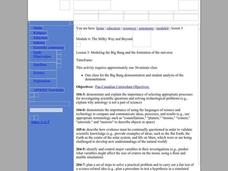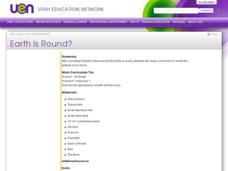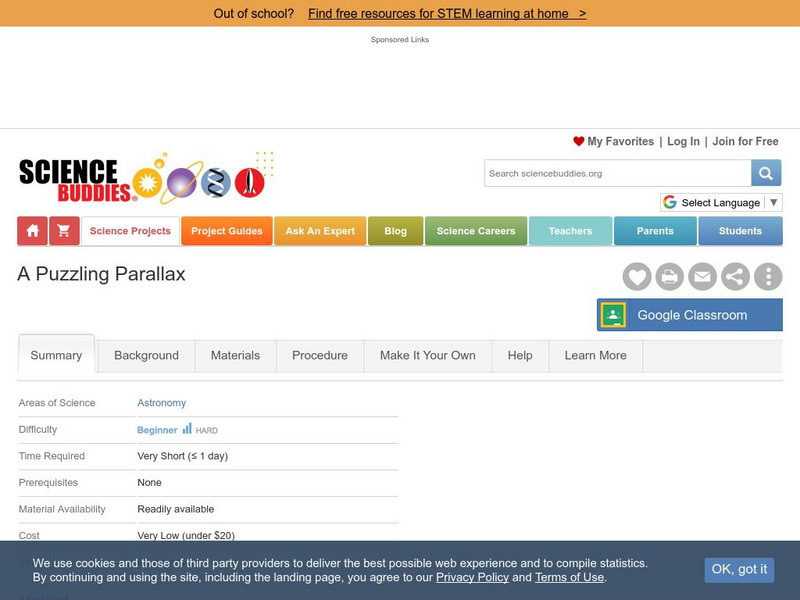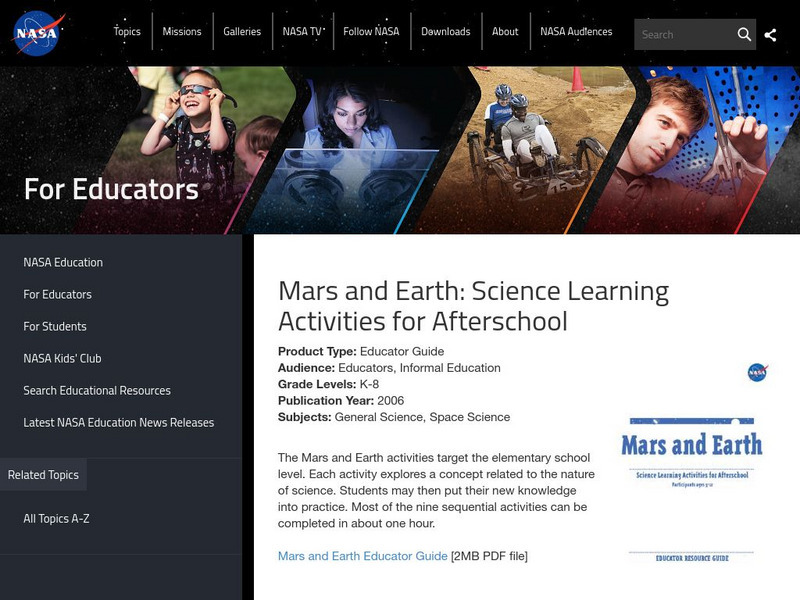Curated OER
Clean Air
Students observe gas molecules in the atmosphere absorbing the light that goes through them.
Curated OER
Water in the Air
Students simulate how clouds block radition and how water in the air condense around containers.
Curated OER
Particulate Sampler
Students estimate the extent of particulate air pollution present in their neighborhoods.
Curated OER
Heat Currents
Students using a slide made out of aluminum foil and pin holes observe visible light.
Curated OER
Simple Spectroscope
Students make a spectroscope out of simple materials and are expected to view as many different light sources as possible to see the whole spectrum.
Curated OER
Projecting Spectra
Students use two methods to show and study the colors in the visible spectrum.
Curated OER
Analytical Spectroscope
Students using a spectroscope view different substances when heated with electricity.
Curated OER
Water Prism
Students using a glass prism filled with water are able to see all of the visible colors found the sunlight.
Curated OER
Wavelength and Energy
Pupils using a rope and other materials explore wavelengths and frequency. If time permits, more experiments can be tried.
Curated OER
Pinhole Viewer
Students make a pinhole viewer to demonstrate how it inverts light passing through it which produces inverted images.
Curated OER
Build Your Own Telescope
Students build a simple astronomical telescope from two lenses and some tubes.
Curated OER
Lenses and Mirrors
Students investigate lenses and mirrors showing how they bend and reflect light waves.
Curated OER
Persistence of Vision Tube
Students demonstrate how individual pieces of data combine to produce complete images.
Curated OER
The Big Bang Theory
Students will use scientific reasoning to formulate ideas about the formation of the universe using the Big Bang Theory. The use of critical thinking skills is part of the activity and the foundation of the scientific method will serve...
Curated OER
Lotto or Life: What Are the Chances?
Though the website does not seem to have the mentioned video, a reding and lottery style games simulate the chances of finding intelligent life somewhere other than Earth. Without the video, this activity is short, but it can be a useful...
Curated OER
The Amazing and Beautiful Aurora
Students create an oil pastel painting. For this pastel painting lesson, students examine images of the aurora borealis. Students produce an original pastel painting of the aurora.
EngageNY
Choice of Unit
Explore using units with scientific notation to communicate numbers effectively. Individuals choose appropriate units to express numbers in a real-life situation. In this 13th lesson of 15, participants convert numbers in scientific...
Curated OER
Exploring The Neighborhood of the Solar System
Pupils explain why exploring the universe for life on other planets is an important field of study. They use mathematical formulas to calculate the temperatures of planets as it relates to their distance from the sun. Students use this...
Curated OER
The Planets Terra Firma
High schoolers explore the theories of the creation of the universe and examine the properties of celestial bodies. They analyze the relationship between the sun, Earth and the other planets.
Curated OER
Earth is Round?
Third graders discuss how Aristotle concluded that the Earth was round. As a class, they review theories about the Earth's shape and describe how life on Earth would be different if it were flat. Individually, they make a moon book in...
Curated OER
Sun and Moon Poetry Baskets
Students write Sun and Moon poetry. In this poetry lesson, students research the sun and the moon. They write poetry and create two class baskets for descriptive words about each.
Science Buddies
Science Buddies: A Puzzling Parallax
Did you know that ancient astronomers could measure the distance to other stars? They could also distinguish between stars and planets. How could they do that without modern technology of telescopes? See if you can discover the link...
NASA
Nasa: Mars and Earth: Science Learning Activities for Afterschool
This set of activities teaches students about the big picture of science using Mars as an example: how to collect data, use evidence, and look at models.

























